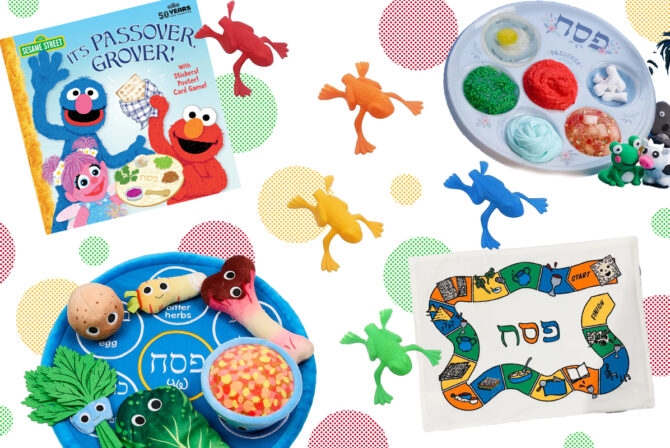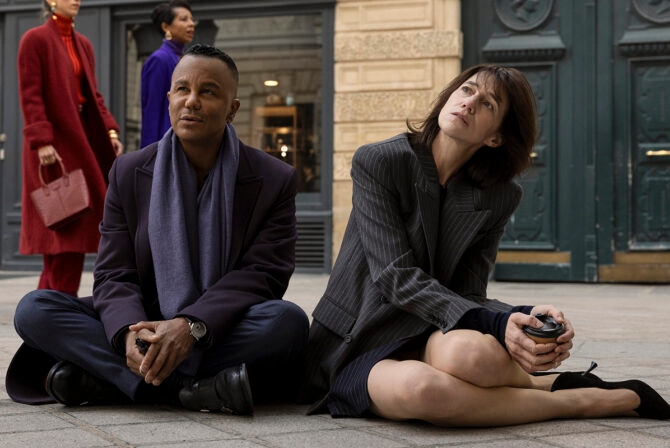Israeli-American photographer Elinor Carucci’s third photography book, released this past Setpember, is titled “Mother.” It’s an extremely beautiful, raw, and inspiring collection of photographs exploring Elinor’s pregnancy, birth, and the early childhood of her twins, Emmanuelle and Eden.
We got a chance to chat with the talented photographer on her inspiration for the book, what it was like to constantly photograph her children, and reconciling her career and her role as a parent. Want to get your hands on this beautiful book? Enter our giveaway at the bottom of this post.
What was your original inspiration for a book of photography about motherhood?
The inspiration was motherhood. It’s as simple as that. The surprising thing for me was how little was actually portrayed about motherhood in the arts and photography. I feel that we’ve seen a lot of perfect celebrity photographs, and even in the history of art, a lot of Madonna and child images that, in a way, show a certain aspect of motherhood but definitely don’t go deep into the complexity of what it is to be a mother, to be a father, to be a parent. The inspiration was the intensity and the richness of the emotions and feelings, the complexity of the relationships that I experienced as a mother, and how much they were intertwined with one another and happening almost side by side, how intense of an experience it is. It is beautiful and joyful and magical and difficult and scary and full of failures and successes. It’s really a microcosm of everything we experience and feel, all of the emotions we have at once. The inspiration was to try to depict it the way I felt it, which was very rich and complex.
How did Emmanuelle and Eden react once they were old enough to understand they were being photographed?
My kids reacted in different ways. For now, they are 9, and this might change as they get older, which I’m aware of. Eden just accepts that this is what I do and that’s it. It’s pretty straightforward and pretty simple. He is, in his personality, more similar to me. He’s very open, he’s comfortable in his own skin, and he runs around naked and he’s fine.
My daughter, when she got old enough to understand, was a little different. She is drawn to images that are more “beautiful” in the classic sense of the word–fashion photography, beauty photography. She knows that I am able to do that because I also shoot for magazines and some of what I’ve done is work with models, on beauty. It’s my take on beauty, but still. So she was asking me why I make pictures that are not “pretty” when she knows that I’m technically able to make “pretty” pictures in the way that she defines “pretty” pictures. That led us into conversations. I’m not convincing her–she sees the images the way she wants to see them. But for me, these images of my family, my life, and my children are the prettiest, the most beautiful and inspiring of all. For me, we don’t have to present a perfect face–through photography or not–to society. Maybe we should try to be kind to one another, but who we are is who we are with our flaws and weaknesses, our beauty and ugliness. I feel that we can share it with the world.
Also, for me, everything about her and her brother is beautiful in a certain way and inspirational. I told her that, so I think it was a way for her to understand more of who I am, and accept–or not accept–my message about how I see the world and what kind of voice I want to have in the world. But it’s my work, and I do it for me, and she will think of it what she thinks of it as she gets older.
In your book forward you mention how it took a few years for you to shake the guilt of thinking like a photographer and being a mother at the same time. How were you able to reconcile the two and find a balance?
I think that one thing that happened with the guilt is that I had to change the way I photographed, especially when the kids were younger, and I would sometimes just take one frame and that was it. I would see something and most of the time I wouldn’t even take this one frame, most of the moments were not being photographed. But when I did photograph, it was–many times–only one or two frames and then I would put the camera down and pick up or feed or hug the child.
Another part of the guilt was that I realized I just can’t fight the guilt. Not only in photography, but in every day of my life as a mother, I feel guilty about something. At some point, I said, “Okay, this is my new existence! I feel guilty that I’m never good enough, I never got them tutors, they’re not doing enough activities, I’m not reading enough to them, I shouldn’t have yelled, I shouldn’t have dragged them in the street…” It’s endless! This is who I am. I still feel guilty, sometimes daily. I’m doing my best and I think I’m a very good mother. They will have to accept me as I am, but I also have to try to accept and embrace the fact that I will feel guilty for being a photographer, for rushing them in the street, for yelling when I shouldn’t have, et cetera. So I just accept it, I think, in my life as a mom, as a wife, and as a photographer.
You are naked in many shots with your children–“After the birthday party” shows your son (Eden) looking about 4 or 5 with a painted face against your breast. Are you often nude around your kids or did you disrobe consciously for the shots? If so, why?
I don’t disrobe myself for the shots. I am naked a lot of the time at home. It just, I think, seems a little different because for the book I edited out images where the kids were completely naked as well, so there are no pictures of their private parts showing, so it’s more the edit than anything else. I did keep the ones where I’m naked, because I’m fine with being naked. As for my kids, I might ask them when they’re older about the pictures where they’re totally naked as well, and I might do a “rated R” version of Mother. But what you see is just that I kept the images where I’m naked. We’re sometimes naked in the house, and we are free with our bodies. We’re not nudists, we don’t live our lives naked, but we can be around each other in the nude and it’s fine.
Why did you choose to photograph your kids during what most would consider banal activities like brushing their teeth?
I photographed my kids, myself, and my family in every kind of moment. There are moments from parties or birthdays and there are moments that are “banal” because I think that life lies in all the moments. It’s not just a special event that’s more full of life and emotion. So I photograph the daily lives, and the dramas of daily life, and sometimes a lot is going on when you brush your daughter’s hair. There is a lot of tension there, and a lot of good intentions that are becoming not successful or going bad. Those simple things contain a lot. When you just hold your child, when they run to you at the end of the day, those daily dramas, for me, are sometimes the highlights. They’re not banal. In them, I see a lot of beauty, a lot of pain, a lot of love, and I wanted to bring that into the work.
Your husband isn’t present in any photo until later on in the book. Why?
I think my husband wasn’t present because, especially in the beginning, I felt like I was one unit with my children, and I was very connected to them–almost only connected to them. Physically, sensually, emotionally. I gave birth to the two of them, I breastfed them for a year, and in a way, I was not a part of a couple. It took me a few years to go back to being a part of a couple. I was totally almost entirely a mother, in the whole of me. My body, soul, and spirit were given to my children and united with them. It was, I think, only when they grew up and started to shift away from me that I had to let that happen, and go back to my husband as a woman, and bring him back to the work. It wasn’t a conscious decision, though, not to include him in the early work. It just happened. It took me a few years, maybe a year or two, to recognize it. When I saw it in the work, he actually pointed it out to me. I didn’t intend for it to be that way. I guess it just reflected something that I was feeling.
You’re very self-aware and confident posing in these photos but also extremely vulnerable. How do you hope these photos change perception of post-baby body image?
I hope they do! It was liberating for me to photograph myself. I was vulnerable. Showing my post-Cesarean, stretchmarked new body wasn’t a, “Look how beautiful I am,” it was a moment that was painful for me. I used to be a dancer, and to come back from the hospital and look at my new body was hard. I wanted to accept it, and photographing it was a way to accept it, and also to share it with other women so it feels better when they get to that moment. I also have later moments, where some of my body recovered, and some of it never did. I think the need to share with people is part of the motivation to do the work. I want to share something that’s truthful, that’s honest. I want to comfort people with my work. I want them to see, “You see, I also have upper lip hair, and hair on my nipples, and I also yell sometimes when I wish I would be a more angelic mom, and I also have this new belly that I hate, or I’m very, very tired and I’m not a Madonna kind of breastfeeding mom. And it’s fine. It’s okay. Let me accept myself, and let you accept yourself, and tell me a little bit about who you are.” A lot of my work leads me to conversations with parents, or people in general, and it’s very comforting for me as well.
Want a copy of “Mother” all for yourself? Enter our giveaway by filling out the form below. We’ll choose a winner this Friday, December 20th.
a Rafflecopter giveaway
Like this post? Get the best of Kveller delivered straight to your inbox.








